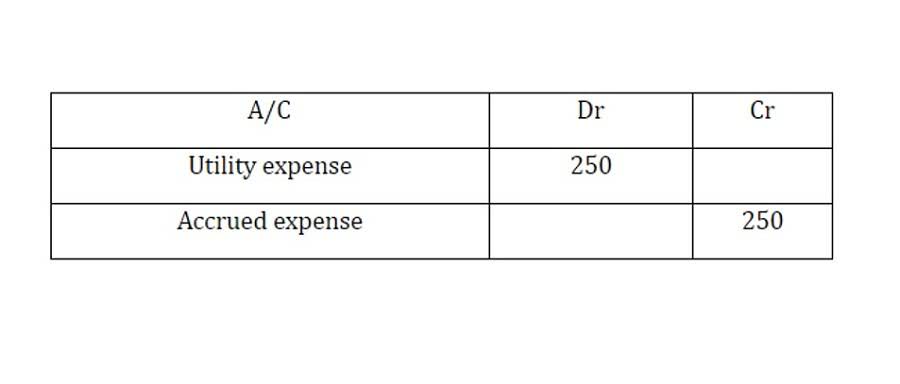Salvage Value Learn How to Calculate an Asset’s Salvage Value

It means that the asset will be depreciated faster than with the straight line method. The double-declining balance method results in higher depreciation expenses in the beginning of an asset’s life and lower depreciation expenses later. This method is used with assets that quickly lose value early in their useful life. A company may also choose to go with this method if it offers them tax or cash flow advantages. There are four allowable methods for calculating depreciation, and which one a company chooses to use depends on that company’s specific circumstances. Small businesses looking for the easiest approach might choose straight-line depreciation, which simply calculates the projected average yearly depreciation of an asset over its lifespan.
Everything to Run Your Business
- Some companies may choose to always depreciate an asset to $0 because its salvage value is so minimal.
- If there’s no resale market for your asset, it likely has a zero salvage value.
- By accurately determining the value, businesses can optimize their financial strategies, anticipate future costs, and allocate resources effectively.
- It would be inaccurate to assume a computer would incur the same depreciation expense over its entire useful life.
- By incorporating this concept into their asset management strategies, businesses can navigate the complexities of the market with greater clarity and confidence.
Under straight-line depreciation, the asset’s value is reduced in equal increments per year until reaching a residual value of zero by the end of its useful life. The salvage value is considered the resale price of an asset at the end of its useful life. In such cases, the insurance company decides if they should write off a damaged car considering it a complete loss, or furnishing an amount required for repairing the damaged parts. So, in such a case, the insurance company finally decides to pay for the salvage value of the vehicle rather than fixing it.
Partial Year Depreciation
The impact of the salvage (residual) value assumption on the annual depreciation of the asset is as follows. The useful life assumption estimates the number of years an asset is expected to remain productive and generate revenue. This formula is best for production-focused businesses with asset output that fluctuates due to demand. This formula is best for companies with assets that lose greater value in the early years and that want larger depreciation deductions sooner. Residual values are also called break-up values, scrap values, and salvage values.
Formula and Calculation of Salvage Value
It equals total depreciation ($45,000) divided by useful life (15 years), or $3,000 per year. This is the most the company can claim as depreciation for tax and sale purposes. You know you’ve correctly calculated annual straight-line depreciation when the asset’s ending value is the salvage value. In the depreciation schedule above, the refrigerator’s ending book value in year seven is $1,000, the same as the salvage value.

How to Calculate Salvage Value
Discover how to identify your depreciable assets, calculate their salvage value, choose the most appropriate salvage value accounting method, and handle salvage value changes. The depreciation journal entry accounts are the same every time — a debit to depreciation expense and a credit to accumulated depreciation. You must remain consistent with like assets; if you have two fridges, they can’t be on different depreciation methods.
- It equals total depreciation ($45,000) divided by useful life (15 years), or $3,000 per year.
- By integrating financial data and automating calculations, Deskera ERP ensures accuracy and consistency in determining salvage values across various asset categories.
- The salvage value is calculated to know the expected value or resale value of an asset over its useful life.
- Discover how to identify your depreciable assets, calculate their salvage value, choose the most appropriate salvage value accounting method, and handle salvage value changes.
- You must remain consistent with like assets; if you have two fridges, they can’t be on different depreciation methods.
- The carrying value of an asset as it is being depreciated is its historical cost minus accumulated depreciation to date.
If the same crane initially cost the company $50,000, then the total amount depreciated over its useful life is $45,000. Salvage value, also called scrap value, is the value of a specific asset after its useful life. In simpler terms, the scrap value is what a company expects to receive in exchange for the sale of the asset after its useful life. After 10 years, the value of the same machinery is determined to be Rs.10,000. The salvage value is also significant when determining the depreciation schedule. An estimated salvage value can be determined for any asset that a company will be depreciating on its books over time.

Think of it as a ledger chronicling your asset’s journey through time and wear. It is tallied by aggregating the annual loss in value for the entire duration you have owned it. Consider it a gauge indicating the extent to which your asset has aged or deteriorated. Some financial institutions may even have their own sophisticated methods and valuation models that already are in place, which does not require them to follow the two common methods mentioned above.

How Does the Salvage Value Calculator Beneficial?
Consulting with experts or considering alternative valuation methods may be necessary for more complex or specialized assets. By giving due importance to scrap value, businesses can not only optimize their asset utilization but also maintain precise and strategic financial records. By estimating the value, companies can assess the potential returns they may receive when the asset is retired or sold. Suppose a company spent $1 million purchasing machinery and tools, which are expected to be useful for five years and then be sold for $200k. There are six years remaining in the car’s total useful life, thus the estimated price of the car should be around $60,000.
The fraud was perpetrated in an attempt to meet predetermined earnings targets. In 1998, the company restated its earnings by $1.7 billion – the largest restatement in history. We’re firm believers in the Golden Rule, which is why editorial opinions are ours alone and have not been previously reviewed, approved, or endorsed by included advertisers.

Anything your business uses to operate or generate income is considered an asset, with a few exceptions. The Financial Accounting Standards Board (FASB) recommends using “level one” inputs to find the fair value of an asset. In other words, the salvage value equation best place to find an asset’s market value is where similar goods are sold, or where you can get the best price for it. Say that a refrigerator’s useful life is seven years, and seven-year-old industrial refrigerators go for $1,000 on average.
Ready to Take The Next Step?
For more information about any of the products and services listed here, schedule a meeting today or register to attend a seminar.

